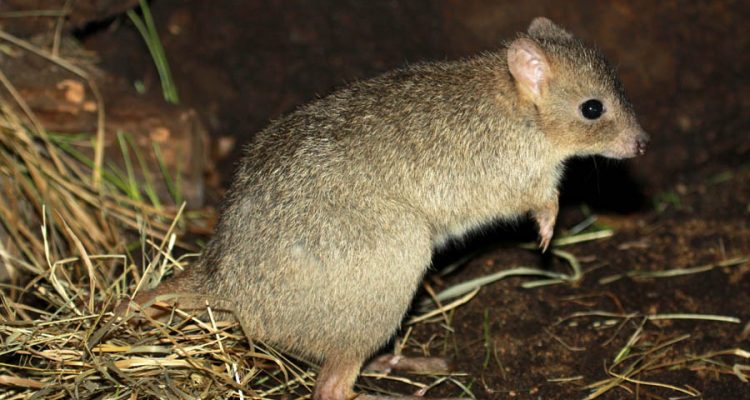
Bettongia penicillata
Bettongia penicillata NatureServe Explorer Species Reports — NatureServe Explorer is a source for authoritative conservation information on more than 50,000 plants, animals and ecological communtities of the U.S and Canada. NatureServe Explorer provides in-depth information on rare and endangered species, but includes common plants and animals too. NatureServe Explorer is a product of NatureServe in collaboration with the Natural Heritage Network.
ITIS Reports — ITIS (the Integrated Taxonomic Information System) is a source for authoritative taxonomic information on plants, animals, fungi, and microbes of North America and the world.
FWS Digital Media Library — The U.S. Fish and Wildlife Service’s National Digital Library is a searchable collection of selected images, historical artifacts, audio clips, publications, and video.The woylie or brush-tailed bettong (Bettongia penicillata) is an extremely rare, small marsupial, belonging to the genus Bettongia, that is endemic to Australia. There are two subspecies: B. p. ogilbyi, and the now extinct B. p. penicillata.
A description published as Hypsiprymnus ogilbyi, a species now recognised as the only extant subspecies of B. penicillata. The cited author is G. R. Waterhouse, who presented a manuscript prepared by John Gould. The type was collected at York, Western Australia.
- Bettongia penicillata penicillata J.E. Gray, 1837. The nominate subspecies, classified as a modern extinction.
The common name, “woylie”, is derived from walyu in the Nyungar language. The regional variants amongst Nyungar peoples are noted as wol, woli and woylie. The spelling woylie, and its variants, were used for the species in reports and advertisements in Western Australian newspapers, and the spelling ‘woylye’ was added in the 1920s. The names boodie and boodie rat came to be applied by the rural inhabitants to several species in south-west Australia, including the woylie, and printed in references to them after 1897. However, the boodie (Bettongia lesueur) is now recognised as a separate species. The term “kangaroo rat” was also applied from the founding of the Swan River Colony, and was sometimes used to distinguish the species from the boodie. Another vernacular term applied to the woylie was “farting rat”, inspired by the abrupt noise it emits when disturbed
| Status | Date Listed | Lead Region | Where Listed |
|---|---|---|---|
| Endangered | 12/02/1970 | Foreign (Headquarters) | Wherever found |
- Countries in which the the Brush-Tailed rat-kangaroo, Wherever found is known to occur: Australia
| 12/02/1970 | 35 FR 18319 18322 | List of Endangered Foreign Fish and Wildlife; 35 FR 18319 18322 |
| 07/30/1970 | 35 FR 12222 12225 | Notice of Proposed Rulemaking (Conservation of Endangered Species and Other Fish or Wildlife); 35 FR 12222 12225 |












